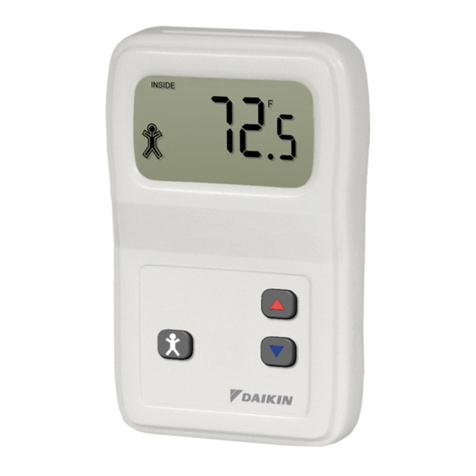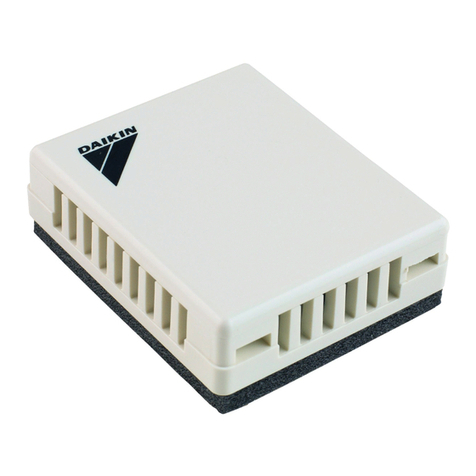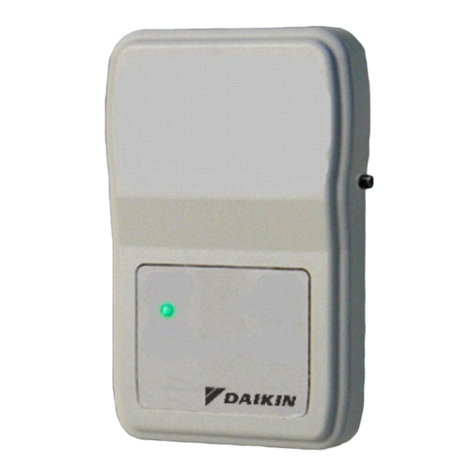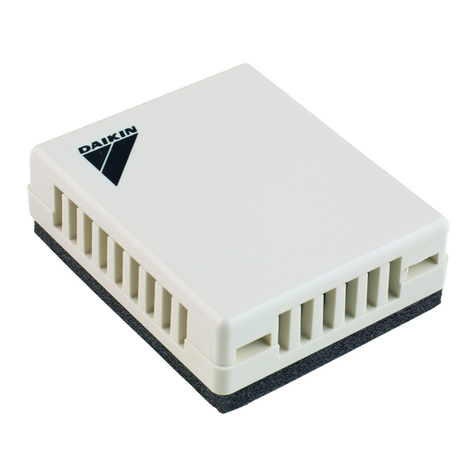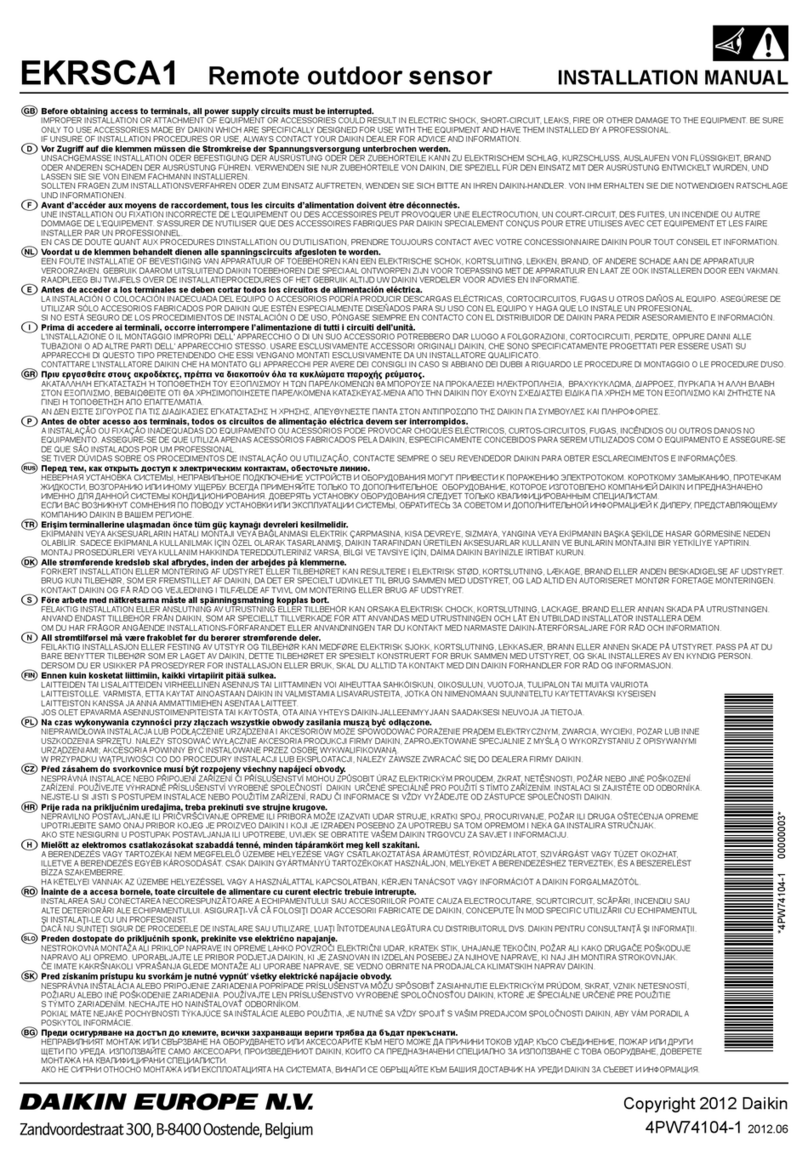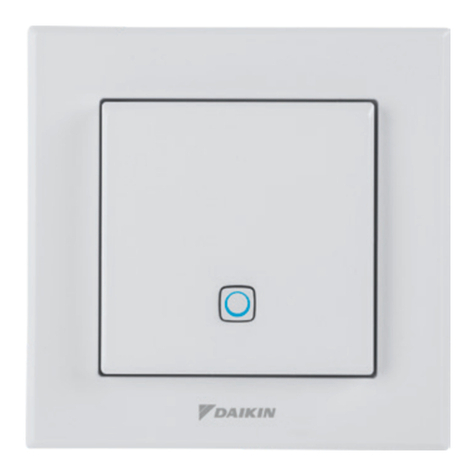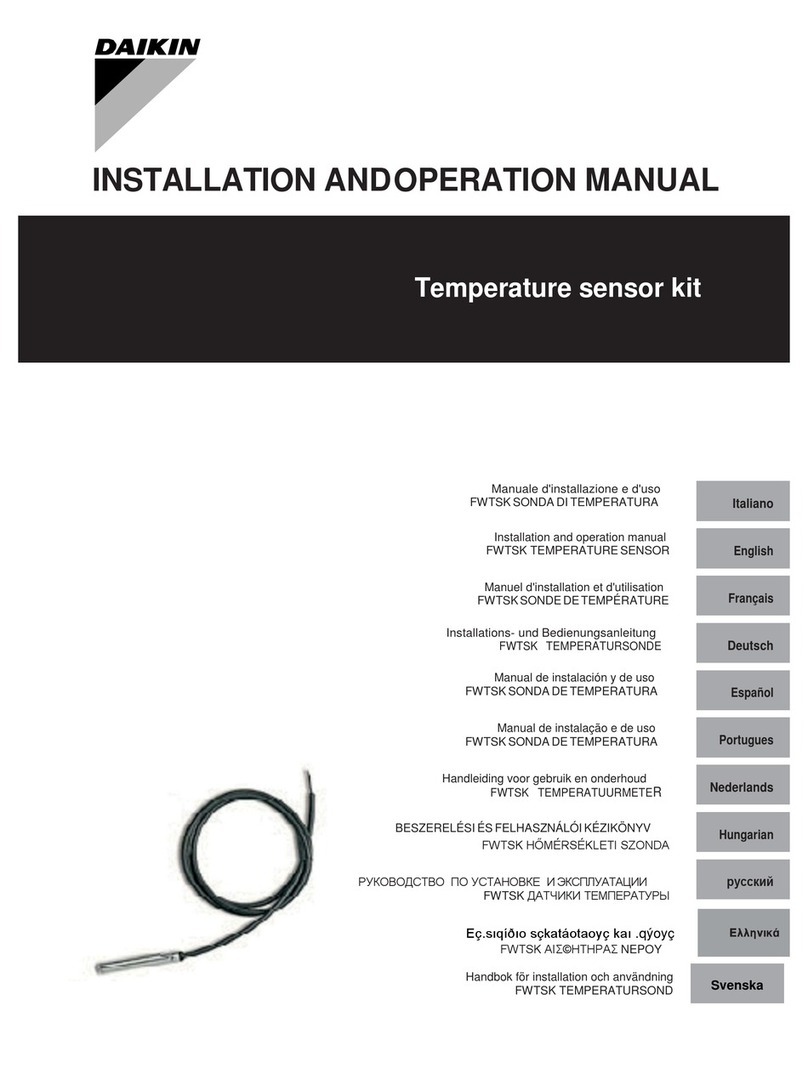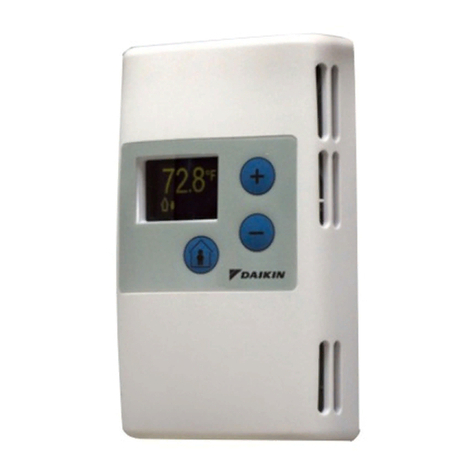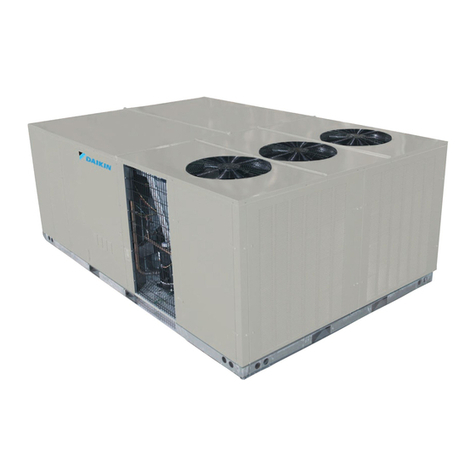
4
Installation
Procedure
Installation
Built-inbreaker
model
Built-intank
model
Different-voltage
model
CEmodel
Built-inheater
model
Installation
Models
OilCooling Unit and Accessories
4
Precautionsfor Installation 5
Referencefor Pipe Selection 6
ElectricWiring 7
CONTENTS
1
Circulating type
Standard
model
Menu
Series
Built-in
breaker
model(–B)
CEmodel
(–C)
Built-in
heater
model(–H)
Built-in
tankmodel
(–T1,–T)
Different-
voltage
model(–E)
AKZ148
AKZ328
AKZ438
AKZ568
AKZ908
Instruction Manual
AKZ8 Series
Ifthe air filter is clogged, the cooling performance deteriorates,
causingexcess power consumption.
Cleanthe air filter periodically to reduce power consumption.
Thankyou for purchasing DAIKIN Oil Cooling Unit (“OILCON”).
Thisinstruction manual includes instr uctions forusing the Oil
CoolingUnit.
Toensure proper use of this product, be sure to read through this
instructionmanual before using it.
Afterreading this manual, keep it handy for your future reference.
MonitorItems 23
TimerOperation 24
AdditionalSetting Functions 25
SettingAdditional Function 27
ForTemperature Control Improvement 30
Alarm/WarningOutput Logic 33
AlarmSettings for Optional Protection
Devices(Installed by User) 33
Handling
BeforeOperation
12ModelIdentification and Specifications
14
PartNames and Functions 15
Namesand Functions of the Control Panel Parts
16
CheckingInitial Operating Conditions 18
OperationSetting 19
HoldingConstant Oil Temperature 20
TuningOil Temperatureto Room Temperature
(orMachine Temperature)
21
CoolingOil at Constant Capacity (%) 22
Optional Parts
Machinetemperature tuning control 34
Returnedoil temperature control 35
Communicationwith main machine 36
Maintenance
37
38
Maintenance/Inspection
•Daily maintenance/inspection
•Periodic maintenance/inspection
•To leave the unit unused fora long period
Troubleshooting
•When the unit operation seems abnormal
althoughno alarm is activated
•When an alarm is activated
SafetyPrecautions
Installation
Procedure
Before
Operation
Useful
Functions
Maintenance
Troubleshooting
Optional
Functions
Operating
Procedure
DAIKIN Oil Cooling Unit
(“OILCON”)
Proper use results in power saving
PIM00116A
Built-inbreaker
model
Built-intank
model
Different-voltage
model
CEmodel
Built-inheater
model
Installation
Models
OilCooling Unit and Accessories
4
Precautionsfor Installation 5
Referencefor Pipe Selection 6
ElectricWiring 7
CONTENTS
1
Circulating type
Standard
model
Menu
Series
Built-in
breaker
model(–B)
CEmodel
(–C)
Built-in
heater
model(–H)
Built-in
tankmodel
(–T1,–T)
Different-
voltage
model(–E)
AKZ148
AKZ328
AKZ438
AKZ568
AKZ908
Instruction Manual
AKZ8 Series
Ifthe air filter is clogged, the cooling performance deteriorates,
causingexcess power consumption.
Cleanthe air filter periodically to reduce power consumption.
Thankyou for purchasing DAIKIN Oil Cooling Unit (“OILCON”).
Thisinstruction manual includes instr uctions forusing the Oil
CoolingUnit.
Toensure proper use of this product, be sure to read through this
instructionmanual before using it.
Afterreading this manual, keep it handy for your future reference.
MonitorItems 23
TimerOperation 24
AdditionalSetting Functions 25
SettingAdditional Function 27
ForTemperature Control Improvement 30
Alarm/WarningOutput Logic 33
AlarmSettings for Optional Protection
Devices(Installed by User) 33
Handling
BeforeOperation
12ModelIdentification and Specifications
14
PartNames and Functions 15
Namesand Functions of the Control Panel Parts
16
CheckingInitial Operating Conditions 18
OperationSetting 19
HoldingConstant Oil Temperature 20
TuningOil Temperatureto Room Temperature
(orMachine Temperature)
21
CoolingOil at Constant Capacity (%) 22
Optional Parts
Machinetemperature tuning control 34
Returnedoil temperature control 35
Communicationwith main machine 36
Maintenance
37
38
Maintenance/Inspection
•Daily maintenance/inspection
•Periodic maintenance/inspection
•To leave the unit unused fora long period
Troubleshooting
•When the unit operation seems abnormal
althoughno alarm is activated
•When an alarm is activated
SafetyPrecautions
Installation
Procedure
Before
Operation
Useful
Functions
Maintenance
Troubleshooting
Optional
Functions
Operating
Procedure
DAIKIN Oil Cooling Unit
(“OILCON”)
Proper use results in power saving
PIM00116A
Oil Cooling Unit and Accessories
Check the following items:
Check the model name and serial No. (MFG. No.) on the nameplate attached to the right side of the Oil Cooling Unit.
Oil Cooling Unit
1
An accessory package
∗1
is attached to the top plate of the Oil Cooling Unit. Make sure that the following items are included
in the accessory package.
1.
Instruction manual (This document): 1 volume
Keep this manual in place where users can read it whenever required.
2.
Rubber bushing for electric wiring (Large size, with cross slit): 1 pc.
When connecting the power cable, remove the resin cable hole cap in the side plate of the unit, and attach the rubber
bushing. It is only for provisional use.
∗2
3.
Rubber bushing for electric wiring (Small size, with cross slit): 1 pc.
When connecting the signal cable, remove the resin cable hole cap in the side plate of the unit, and attach the rubber
bushing. It is only for provisional use.
∗2
Accessories
2
∗1: Before operation, be sure to remove the accessory package. Otherwise, the package blocks exhaust air flow, resulting in cooling
capacity deterioration.
∗2: When connecting each cable finally, place the cable in a conduit. If the rubber bushing is used, the dust-proof effect of the electrical
equipment box deteriorates, causing a fault. For details, refer to “Wiring procedure” on page .
8
+
Accessory package
Instruction manual
(This document)
Machine nameplate
Rubber bushing
(Large and small, 1 pc. each)
Model
name
Type of
refrigerant
Manufacture
No.
Oil Cooling Unit
PIM00116C_EN.fm 4 ページ 2008年9月29日 月曜日 午前11時51分
